Making The Most of Streaming Video Advertising
As streaming video has grown, so too has the opportunity for advertising. Although many brands still utilize traditional television for their ad spots, a growing number are increasing their ad spend budgets to target video streaming platforms as those streaming platforms have adopted AVOD subscription tiers. Hulu, Peacock, and Paramount all have ad-supported and ad-free subscriptions. And as recent news about Netflix’s loss of subscribers shows along with their likely launch of an ad-supported tier, everyone is either acknowledging or coming to the conclusion that ads are a viable part of the revenue stream. Those traditional SVOD providers supporting ad-funded tiers, combined with pure-play ad-supported streaming offerings like PlutoTV and Tubi, coupled with more people watching more online video, results in an ever growing pool of ad opportunities for brands (which is perhaps why more brands are shifting television ad budgets to streaming video). But a lot of ads doesn’t equate totally with a lot of ad revenue. Errors and lack of insight can leave ad dollars on the table. To improve streaming video ad revenue
But, let’s face it, streaming video advertising is nothing like broadcast television advertising.
Sure, there are similarities and streaming video has even adopted broadcast advertising technologies like ad signaling. But the process of inserting ads into streaming video is an order of magnitude more complicated than broadcast. There are so many systems in play, from DSPs to ad servers to the player itself meaning there are countless ways something could go wrong. Still, there are major benefits to streaming video advertising, the most notable being the data. Unlike traditional broadcast, there is an incredible amount of data available to advertisers when delivering via streaming video. This allows those advertisers to target the ads against viewer demographics and viewer behaviors. Whether in aggregate or individually, advertising in streaming video can be distilled down to the very session between a viewer and the content. Imagine if you could do that in traditional broadcast?
The Complexity of Streaming Video Ad Data
Yet that data is also an aspect of the complexity. With so many systems throwing off so much data, it can be very difficult to achieve the visibility that’s needed to take advantage of the promise of the targeting (we have tried to illustrate the variety of systems in the Datazoom Datatecture for Streaming Video). What about the data that makes it so difficult?
Fragmentation. There is no standard way to store or transmit data, especially amongst different technology vendors within the ad technology stack. That fragmentation creates a lot of issues for companies that want to remain nimble and agile. That’s why we’ve created a data dictionary to help standardize values and close the fragmentation gap.
Post-processing. When data is really fragmented, ad, product, and operations teams have to spend countless hours piecing together a picture of behavior or errors by post-processing the data to align better. That’s time spent that could be used to actually resolve the issue or take action against some viewer behaviors.
Visibility. Although many technology vendors within the data ecosystem of the streaming video stack make data available programmatically, they all use proprietary visualization tools. And even if you pull the data into your own dashboard, how many sources does it take until the dashboard is so complex that it defeats the purpose of data visualization?
A Blog Series To Help You Improve Streaming Video Ad Revenue Through Better Use of Data
In this blog series, we will explore best practices, using a Datazoom integration with Looker as an example, to overcome those challenges and enable streaming operators and brands to improve the revenue and impact of their advertising. Five posts will cover everything from collecting the data to optimizing performance:
Step 1: Combining ad data from different sources into a single feed
Step 2: Setting and monitoring KPIs to improve ad performance
Step 2: Creating a visualization of advertising KPIs across the business
Step 4: Identifying and reducing ad errors to decrease opportunity cost
Step 5: Understanding and optimizing the relationship between ad success and content
Each of these blogs is based upon the Datazoom webinar featuring Alex Savage, Director of Digital Advertising for ABS-CBN.
There’s no need for you to leave money on the table. With the right data visualized through meaningful KPIs, you can increase CPM, decrease errors, and generate more revenue from your streaming video ads.
The post Improve Streaming Video Ad Revenue Blog Series appeared first on Datazoom.


